If you’re a resident of Colorado, you’re already aware of how unpredictable the weather is year-round, no matter what geographic region you reside in. Across the Front Range and into the heart of the Rockies, you’ll find a vast array of microclimates that differ widely as far as weather goes, and Colorado Springs is no exception.
Whether you’re planning a visit to Colorado Springs or you’re a potential new resident who is wondering what to expect, we’ve gone over each season’s weather in detail to help you get prepared for the ever-changing skies in the Pikes Peak region. As natives often say,
If you don’t like the weather in Colorado, just wait ten minutes.
Here is a breakdown of the average Colorado Springs weather, in order by month and season. They are based on U.S. Climate Data and may contain errors.
| Average Temp (°F) | Preciptation (In) | |
|---|---|---|
| Jan | 18-42°F | 0.3″ |
| Feb | 20-45°F | 0.3″ |
| Mar | 26-52°F | 1″ |
| Apr | 33-60°F | 1.4″ |
| May | 43-69°F | 2″ |
| Jun | 51-79°F | 2.5″ |
| Jul | 57-85°F | 2.8″ |
| Aug | 56-82°F | 3.3″ |
| Sep | 47-75°F | 1.2″ |
| Oct | 36-63°F | 0.8″ |
| Nov | 25-51°F | 0.4″ |
| Dec | 18-42°F | 0.3″ |
Winter Climate in Colorado Springs
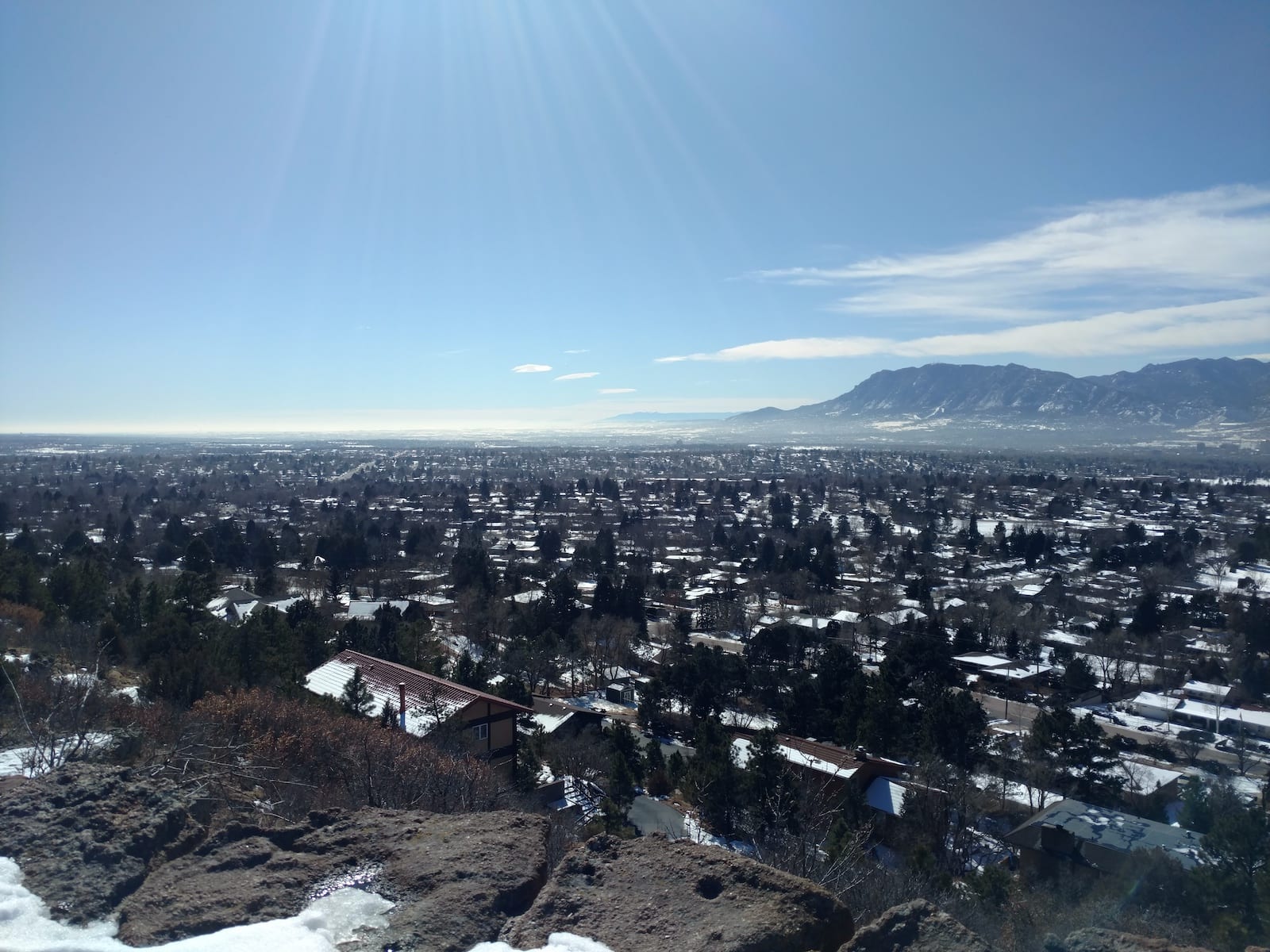
Most Coloradans consider the end of November to be the beginning of winter–fall never lasts long in Colorado and the first snowfall typically happens in October or early November, leading to colder and more overcast days. Plus most of the ski resorts near Colorado Springs are open by December. The end of winter is unpredictable too, sometimes ending in April and other years in June or even July.
Winter is one of the best times of the year to visit Colorado Springs, as days of snow are typically followed by rapid snowmelt, which makes for pleasant outdoor excursions and usually doesn’t disrupt daily commutes. Winter is also amongst one of the most unpredictable seasons, however–with about half of the month spent covered in clouds, weather patterns can change far faster than forecasters can keep up with.
Between December and late March (sometimes into April or even May or June), snowfall can happen at just about any time.
Average Winter Temperatures and Precipitation
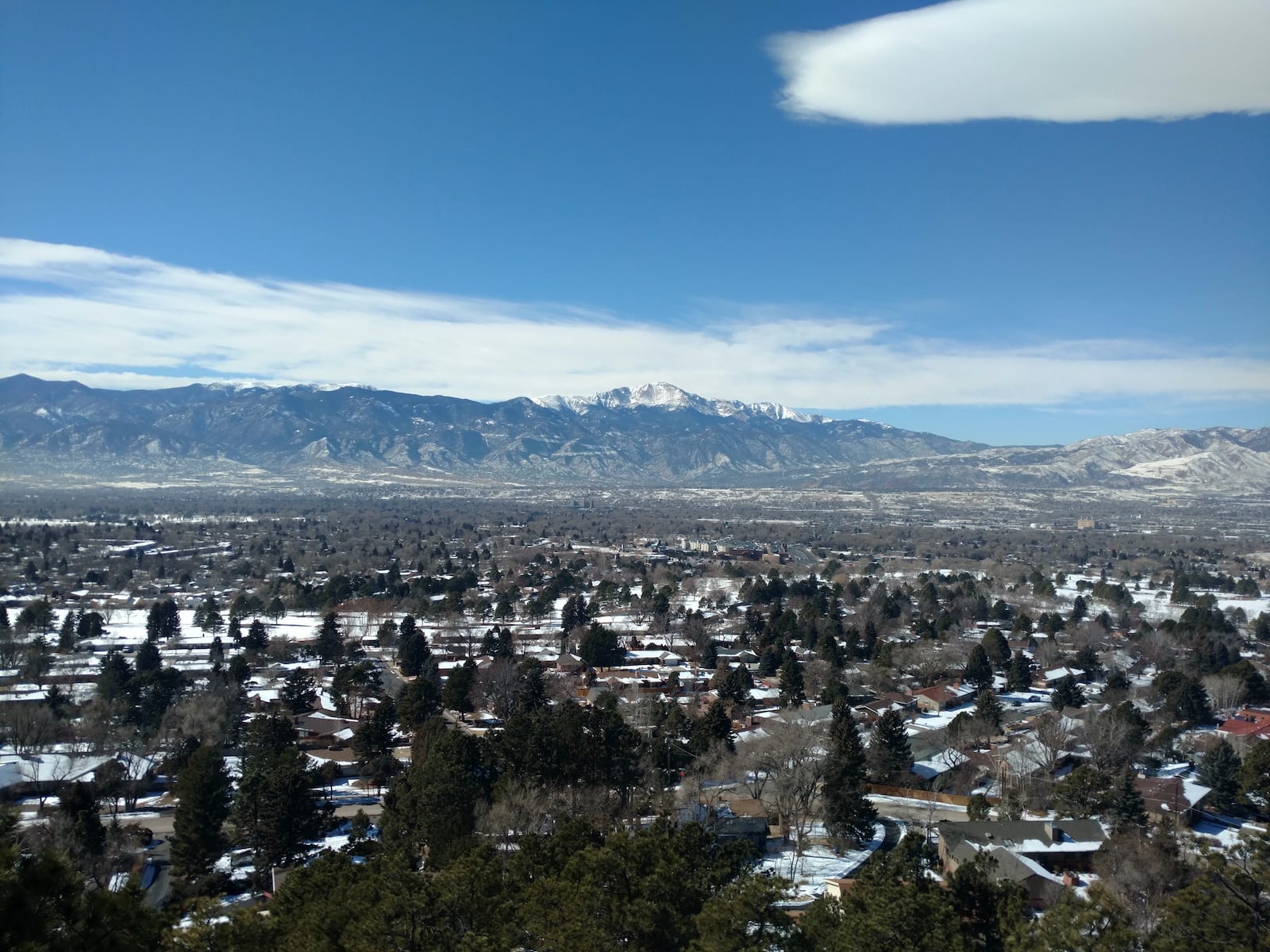
Starting in December, average temperatures in Colorado Springs range between 42.1 degrees at the warmest and 17.5 degrees at the coldest. January is similar to December, with an average high of 43.2 degrees and a low of 17.7 degrees. February is a bit warmer, with an average low of 19.5 and an average high of 44.8 degrees. Rarely does the temperature ever drop below zero in Colorado Springs, which means that thick winter gear isn’t necessary unless you’re trekking into the mountains for recreation or looking to get outside after a large snowfall?
| December Weather | |
|---|---|
| Temperature | 18-42°F |
| Precipitation | 0.3 in |
| Rainfall Days | 4.3 days |
| Snowfall | 5.9 in |
| Daylight | 9.5 hr |
| Sunlight | 7 hr |
| January Weather | |
|---|---|
| Temperature | 18-42°F |
| Precipitation | 0.3 in |
| Rainfall Days | 3.9 days |
| Snowfall | 5.5 in |
| Daylight | 9.8 hr |
| Sunlight | 7 hr |
| February Weather | |
|---|---|
| Temperature | 20-45°F |
| Precipitation | 0.3 in |
| Rainfall Days | 4.7 days |
| Snowfall | 4.8 in |
| Daylight | 10.8 hr |
| Sunlight | 8 hr |
As far as precipitation goes, again, it is hard to predict. December usually averages around 5.9” of snowfall, while January is a little lower at 5.4” of snowfall. February is typically even drier on average, with 4.8” of snowfall predicted. March, however, which many Coloradans consider a part of winter, on average snows about 7.9”, the wettest month for snow of the year. Even if it’s spring where you are, always pack a coat and winter gear if you’re coming to Colorado Springs before June–you never know when it’ll be below freezing until springtime truly starts.
Spring Climate in Colorado Springs
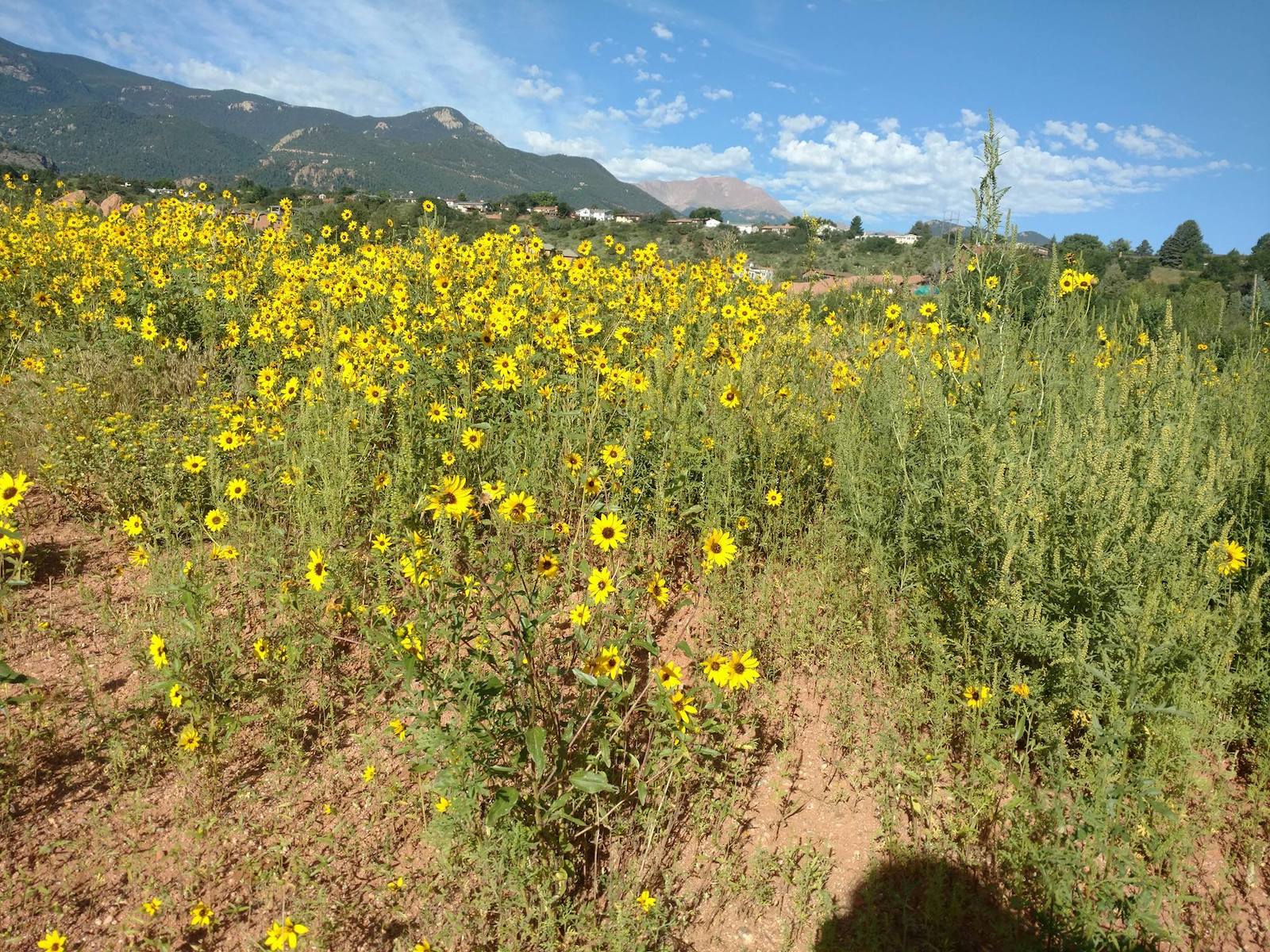
Typically, spring in Colorado Springs begins sometime around March or April, but May is usually when the wildflowers start to bloom and the rest of the plant life follows suit. We see warming temperatures through April and May, making these wonderful months for outdoor recreation as well as some late-season skiing and boarding.
It’s a bit hard to predict when it begins to actually feel like springtime, as in some years (like 2019), Colorado Springs has experienced blizzard conditions in April and even into early May. Springtime is short on the Front Range, but strolling the parks and seeing the wildflowers bob in the breeze makes this season one to appreciate while it lasts.
One thing to watch out for during the early springtime is the hail storms. While they are rare, storms in the past few years have caused millions of dollars in property damage, so keep your eyes on the weather reports before you head out on a hike.
Average Spring Temperatures and Precipitation
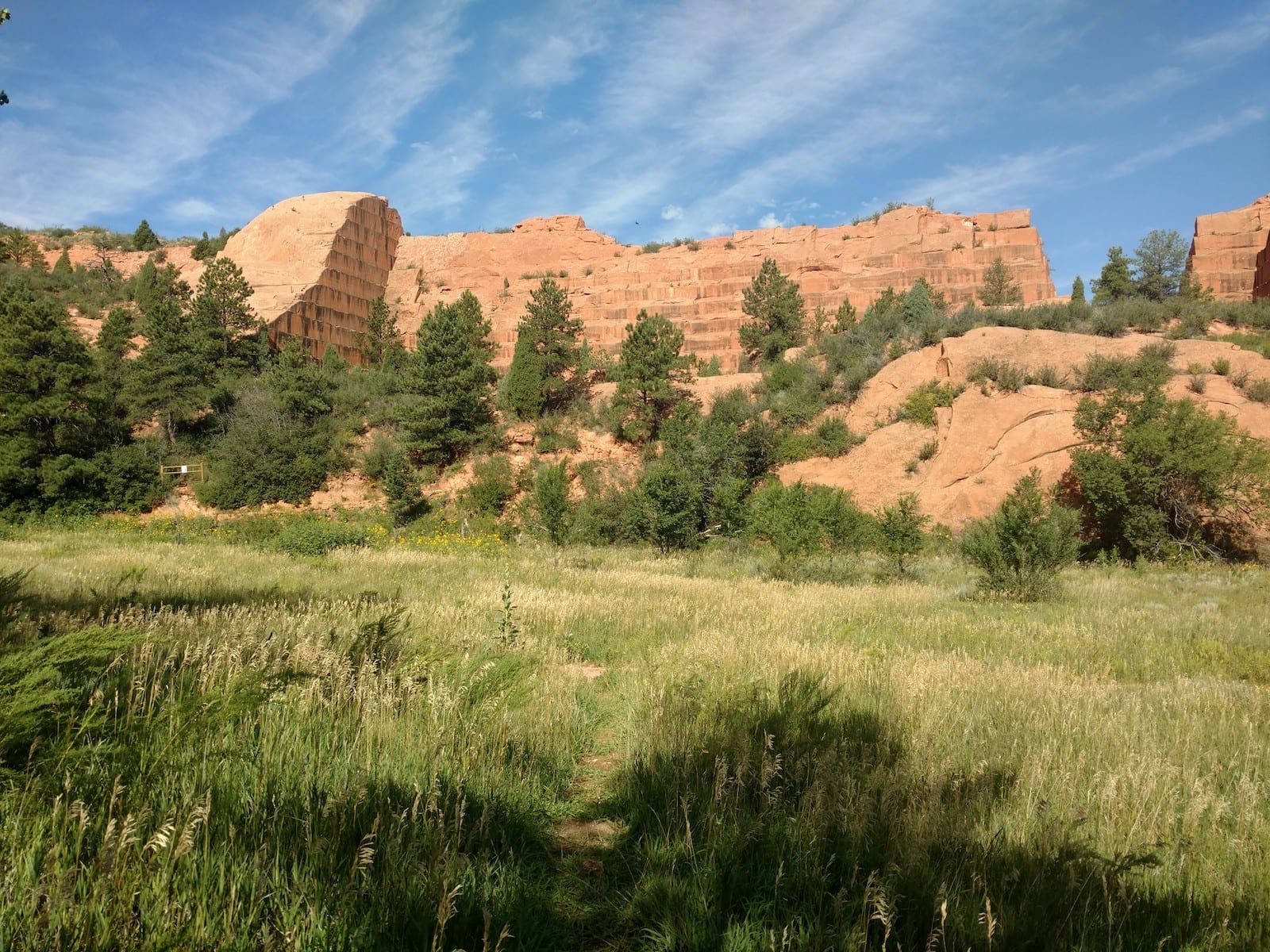
Average temperatures in March hover between 26 degrees and 52.1 degrees, while April warms up a bit more–averages are closer to 33.3 on the low end and around 59.8 degrees on the high end. In May, however, we finally begin to see warmer temperatures and snowfall turning into rainfall, with an average of between 42.7 and 69.1 degrees.
| March Weather | |
|---|---|
| Temperature | 26-52°F |
| Precipitation | 1 in |
| Rainfall Days | 7.6 days |
| Snowfall | 7.9 in |
| Daylight | 12 hr |
| Sunlight | 9 hr |
| April Weather | |
|---|---|
| Temperature | 33-60°F |
| Precipitation | 1.4 in |
| Rainfall Days | 8.3 days |
| Snowfall | 4.9 in |
| Daylight | 13.3 hr |
| Sunlight | 10 hr |
| May Weather | |
|---|---|
| Temperature | 43-69°F |
| Precipitation | 2 in |
| Rainfall Days | 10.6 days |
| Snowfall | 0.7 in |
| Daylight | 13.3 hr |
| Sunlight | 10 hr |
Precipitation during the springtime gradually increases as the weather warms, with about a 1 inch of rain on average in March (but with a high average of snowfall, as we mentioned above), 1.4” of rainfall and 4.9” of snow on average in April, and 2” of rain and .7” of snow on average in May. For those who are trying to catch the best weather days possible, the end of April is usually a beautiful time of year to visit Colorado Springs, while late May will start to get into warmer temperatures.
Summer Climate in Colorado Springs
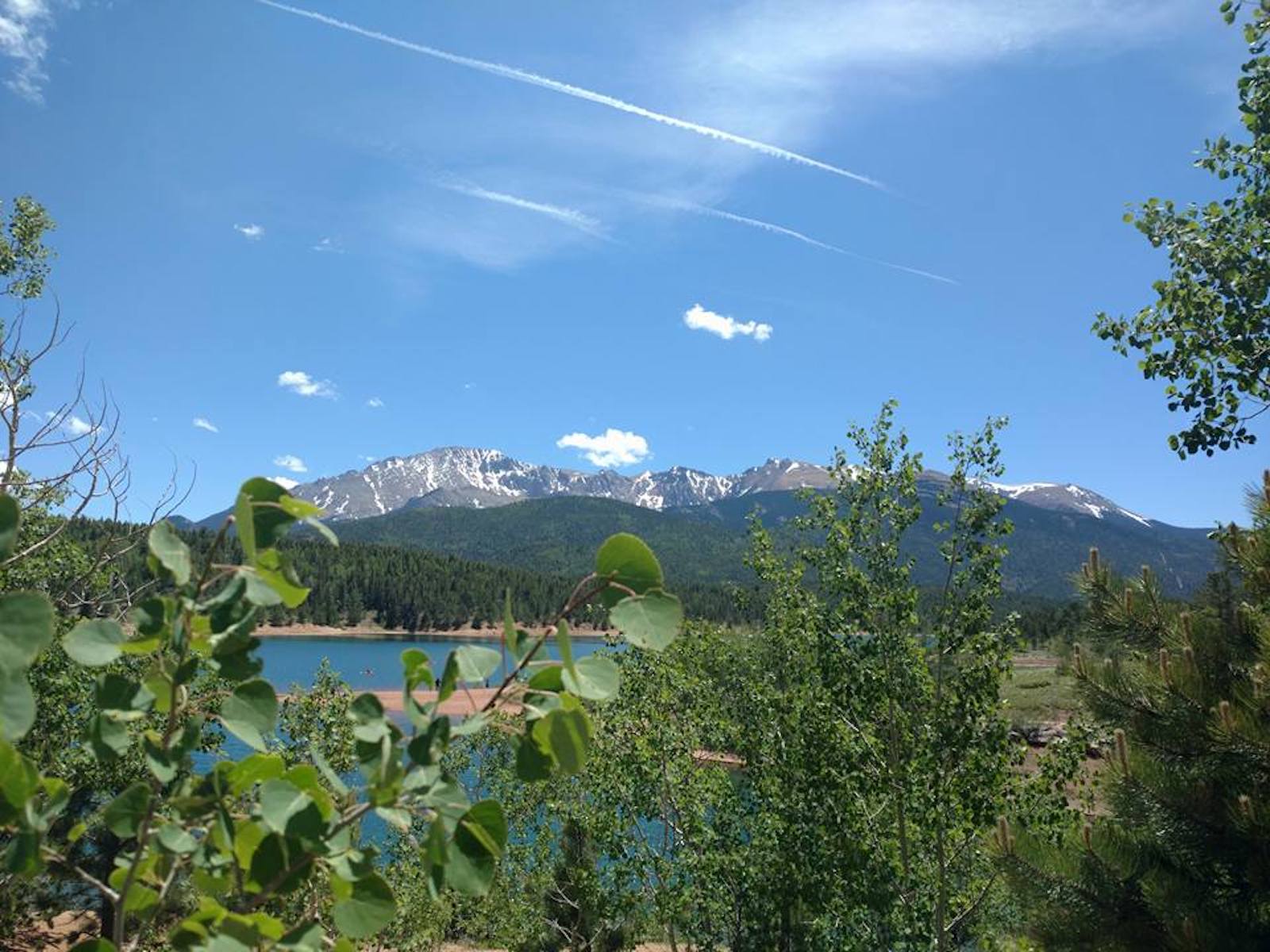
June, July, and August are not only the hottest months in Colorado Springs–they are also quite wet as well, with chances of low humidity cropping up in July. Once all of the wildflower blooms have died, the whole city becomes even greener as the cloud cover increases and the late-afternoon thunderstorms approach over the mountains each day.
Thankfully, Colorado Springs is not known to stay hot for very long. Due to the constant low or even nonexistent humidity, whenever it rains in Colorado Springs, the temperature lowers considerably. Most residents get by without air conditioners in this area, but many newer houses and apartment complexes feature these amenities.
Although the hottest recorded temperature in Colorado Springs topped 100 degrees, that is out of the ordinary. The temperature rarely gets above 90 degrees. The dry heat can be intense in the sunshine however, so make sure you always have water on you while you’re enjoying the warm outdoors. With an average humidity of 0%, the dry heat can wring all of the water out of you very quickly.
Average Summer Temperatures and Precipitation
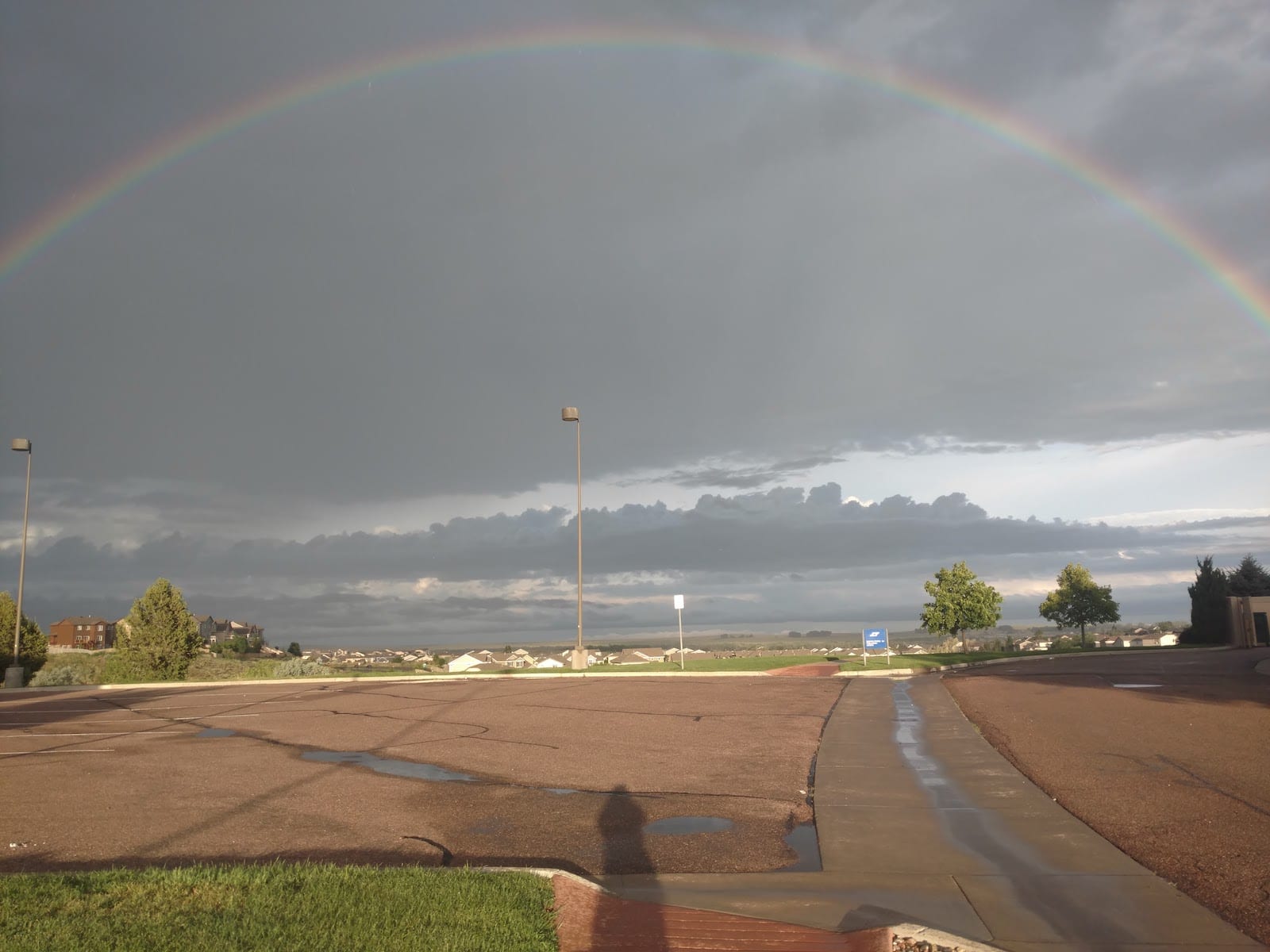
In June, the climate of Colorado Springs is typically still quite comfortable, hovering between 51.3 and 79 degrees as the lows and highs. July is by far the hottest month, with the average high hitting 84.8 degrees and the average low at 56.9 degrees. August cools off a bit, offering an average high of 81.6 degrees and an average low of 55.7.
| June Weather | |
|---|---|
| Temperature | 51-79°F |
| Precipitation | 2.5 in |
| Rainfall Days | 10.2 days |
| Snowfall | 0 in |
| Daylight | 14.9 hr |
| Sunlight | 11 hr |
| July Weather | |
|---|---|
| Temperature | 57-85°F |
| Precipitation | 2.8 in |
| Rainfall Days | 11.5 days |
| Snowfall | 0 in |
| Daylight | 14.6 hr |
| Sunlight | 11 hr |
| August Weather | |
|---|---|
| Temperature | 56-82°F |
| Precipitation | 3.3 in |
| Rainfall Days | 13.6 days |
| Snowfall | 0 in |
| Daylight | 13.6 hr |
| Sunlight | 10 hr |
When it comes to precipitation, rainfall occurs quite often during the summer months, with August typically being the wettest month of the year. In June, the average rainfall is about 2.5”, while July is a little bit higher with an average of 2.8” of rainfall. August, however, usually hovers at 3.3” of rainfall on average, which isn’t much compared to many wetter places, but this is the wettest it gets for the Springs.
The summer months are also just about the only time you’ll experience humidity in this area, as the warm thunderstorms leave a bit of mugginess behind.
Fall Climate in Colorado Springs
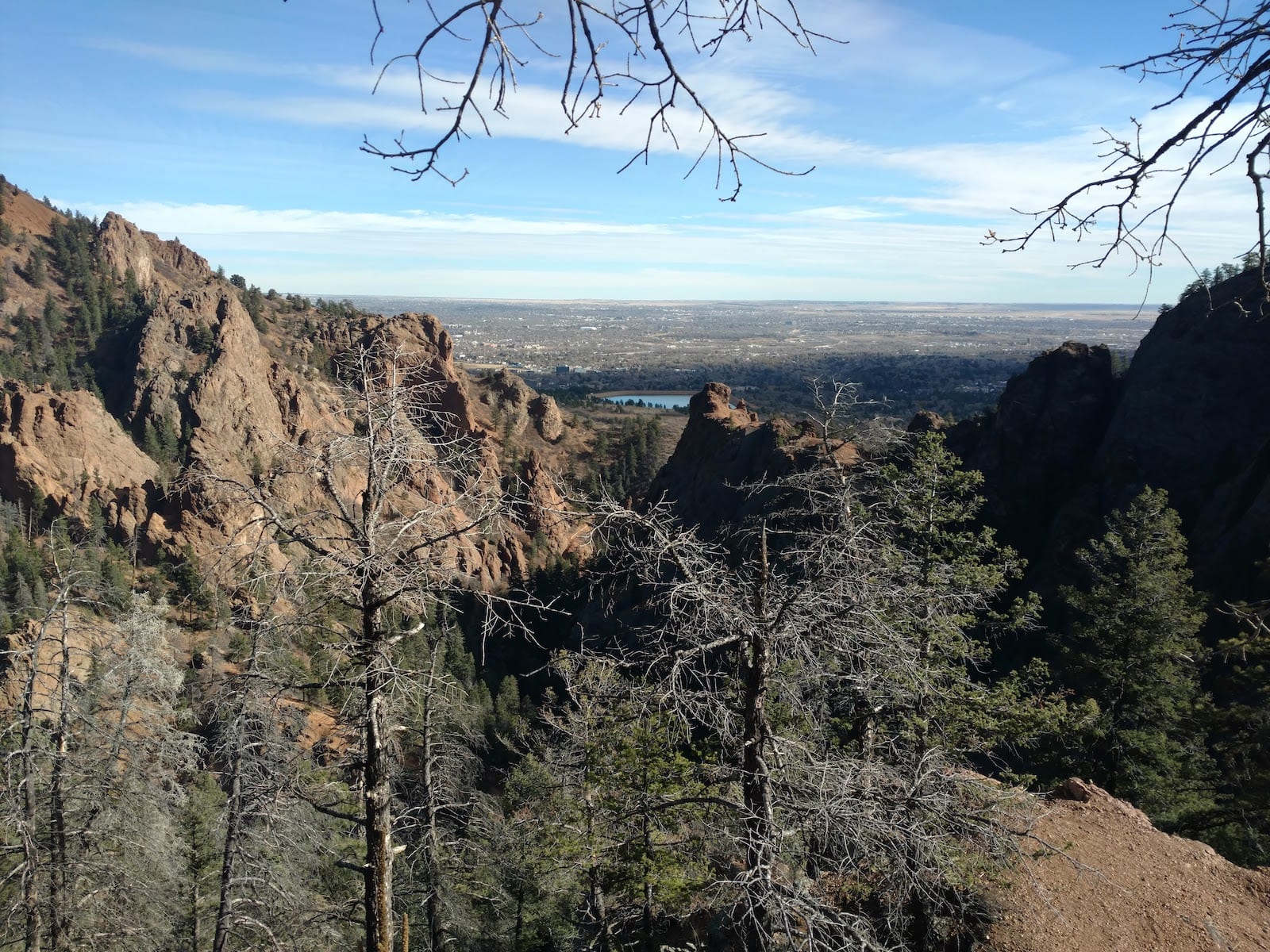
If you’re looking for a season with the nicest weather in Colorado Springs, many argue that fall is one of the best. With very comfortable average temperatures, a limited amount of snowfall, and the leaves changing colors, fall typically comes and goes far too quickly for Springs residents.
For those who want to see the leaves change color, the best time to plan a visit to the Pikes Peak region is between mid-September and mid-October. Not only are these the optimal times to see the leaves at their brightest, but they also are very comfortable months that are great for getting outdoors before winter descends upon the Rocky Mountains.
Average Fall Temperatures and Precipitation
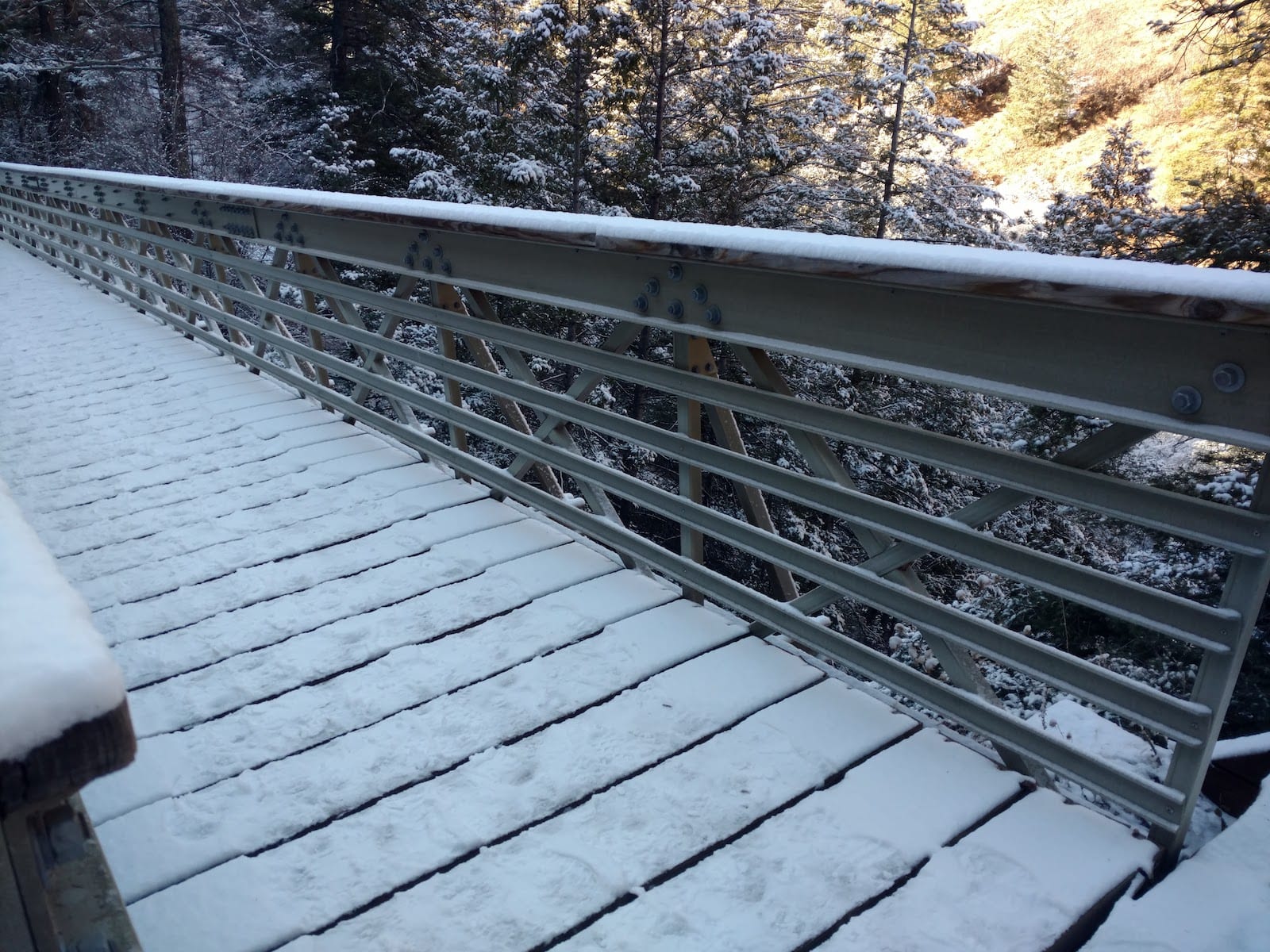
Fall is typically a very comfortable season, temperature-wise. The averages begin to cool off a bit in September, with around 74.5 degrees as the average high and 47.3 degrees as the average low. October gets a bit chillier, as this is the month when the first snowfall often happens, with lows around 35.8 degrees and highs around 63 degrees. November is even colder and often a bit wetter than the previous months, with an average high of 51 and a low of 25.2.
| September Weather | |
|---|---|
| Temperature | 43-69°F |
| Precipitation | 1.2 in |
| Rainfall Days | 7.3 days |
| Snowfall | 0.3 in |
| Daylight | 12.4 hr |
| Sunlight | 9 hr |
| October Weather | |
|---|---|
| Temperature | 36-63°F |
| Precipitation | 0.8 in |
| Rainfall Days | 5 days |
| Snowfall | 3.1 in |
| Daylight | 11.2 hr |
| Sunlight | 8 hr |
| November Weather | |
|---|---|
| Temperature | 25-51°F |
| Precipitation | 0.4 in |
| Rainfall Days | 4.6 days |
| Snowfall | 4.6 in |
| Daylight | 10.1 hr |
| Sunlight | 7 hr |
Precipitation in the fall is often a mix of snow and rain, with rainfall in September leading to snowfall in November. In September, expect an average of about 1.2” of rain and almost no snow–.3” on average. October is typically when it begins to snow in earnest, with .8” of rainfall and an average of 3.1” of snow. November is when rainfall drops even more, leading into the beginning of wintertime, with only .4” of rain and 4.6” of snow on average.
Wild Weather-Aside Colorado Springs is a Delight
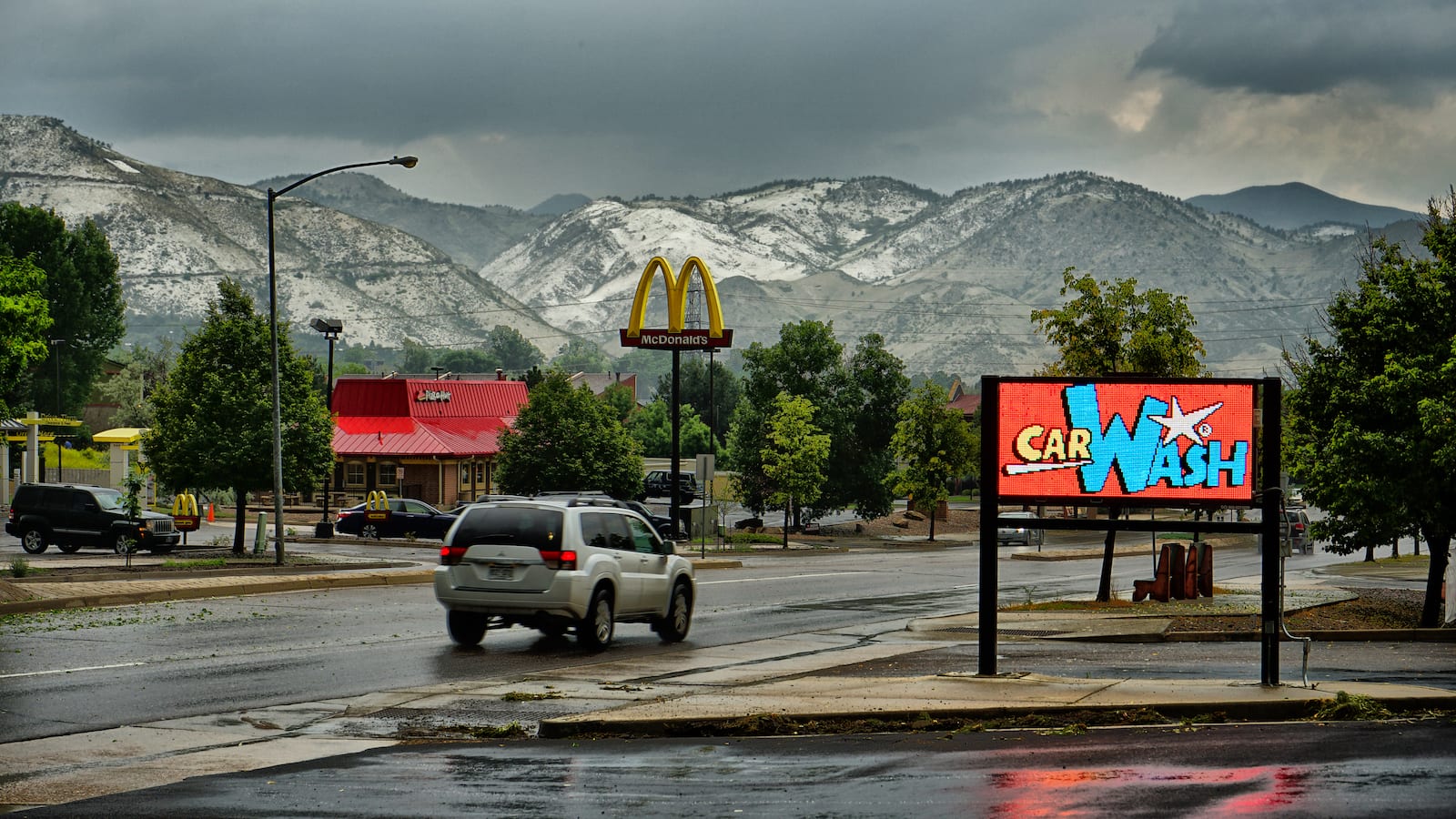
There’s a reason that Colorado Springs was named one of the best places to live by US News. The weather here may be unpredictable, but the sun shines on average 243 days of the year and the snowfall melts quickly enough to make life pretty easy, weather-wise, in the Springs.
For more information about living in Colorado Springs, check out our list of great neighborhoods to find one that’s perfect for you and your family. Just planning a visit? Consider looking into some of the museums, parks, and fine dining restaurants that serve this wonderful city.

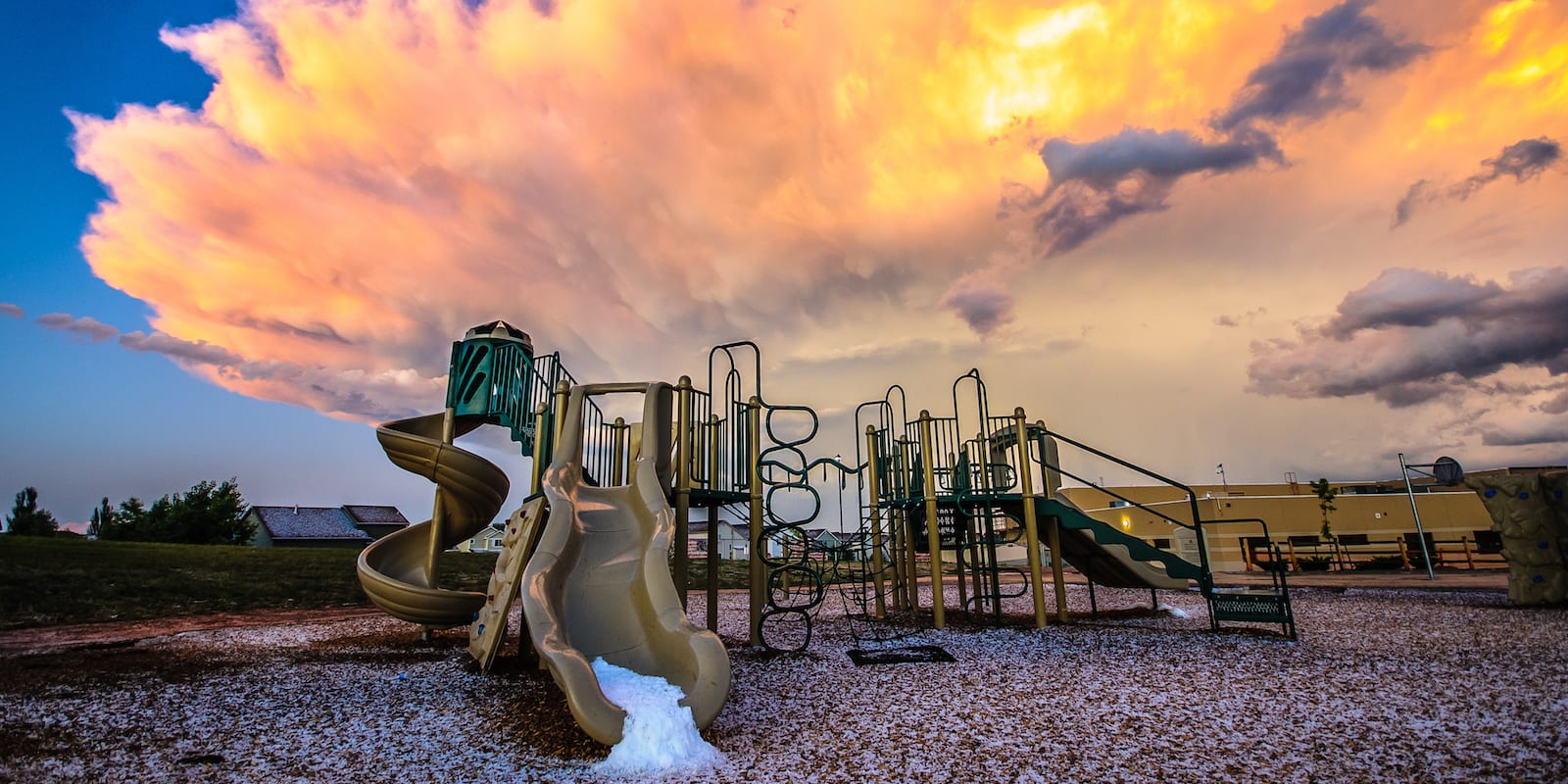
 7 Best Hot Springs Closest to Vail
7 Best Hot Springs Closest to Vail